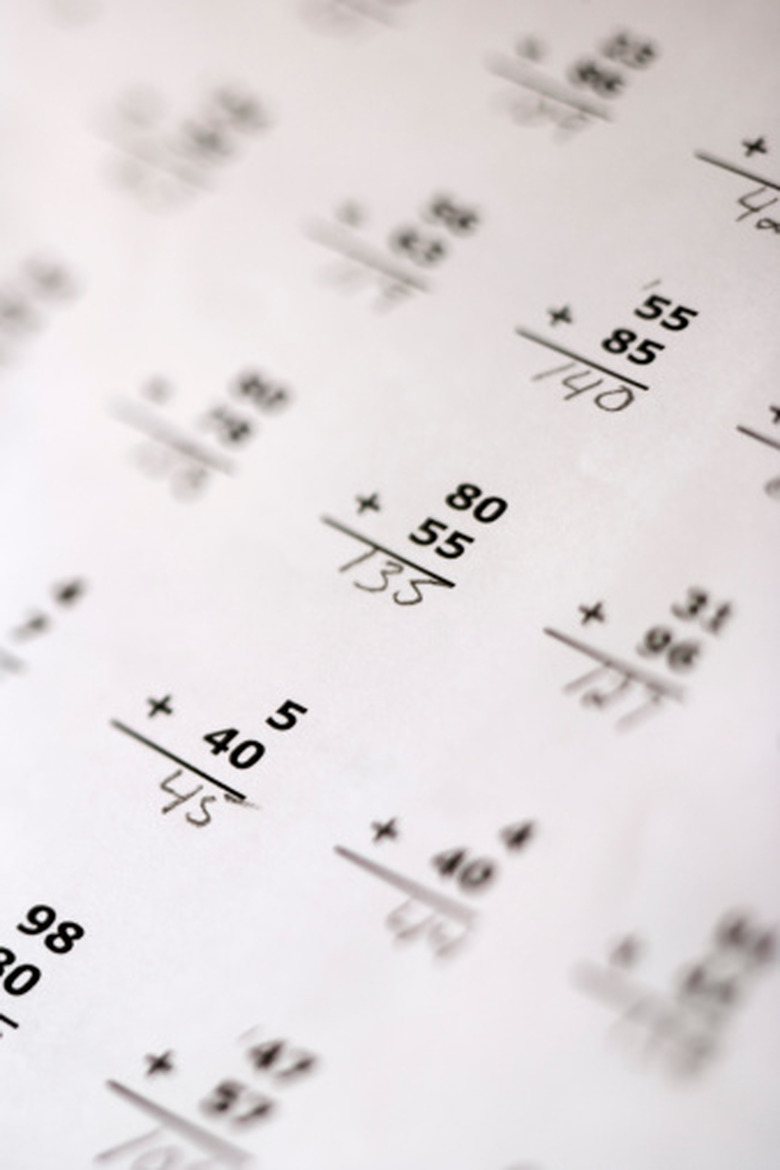The Difference Between Sequence & Function
Mathematics has no gray areas. Everything is rule-based; once you learn the definitions, then doing homework, completing formulas and making calculations will come easily. Knowing how to use sequences and functions will help you especially in algebra, calculus and geometry classes.
Definition of Function
Definition of Function
Function is one of the most basic elements of mathematics. A function assumes that there exists two sets of numbers that correspond — or rely — on each other. Functions can be expressed as written formulas.
The function is written as "f (x) = x"; where "x" is variable. Let it be given that "f (x) =3x" where the input number is "x" and then the function is the number that corresponds with every element of "x."
Definition of Sequence
Definition of Sequence
A sequence is a type of function and consists of any set of integers — whole numbers at or greater than zero. All that a sequence means is that there's a range of integers at or greater than zero that have a range contained in the set of numbers under consideration.
What Sequence and Function Have in Common
What Sequence and Function Have in Common
A sequence is a type of function. Remember, a function is any formula that can be expressed as "f(x) = x" format, but a sequence only contains integers at or greater than zero.
Example of Sequence
Example of Sequence
The Fibonacci Sequence is a well-known example of sequence where the numbers grow larger at a constant rate, represented by the following formula:
(x) = F(x – 1) + F(x – 2)
Referencing the definition of sequence, x is an integer. Any formula is a sequence if it contains whole numbers at or greater than zero. The following are representations of sequences when applied to these numbers:
f(x) = x ( x + 1)
f(x) = (4x)/2
Examples of Function
Examples of Function
Functions are almost everywhere in math: in algebra, calculus, and geometry because they express the relationship between any two numbers.
Commonly used geometric functions include formulas for the area of an object. For example, the function for the area of a square where "x" is the length of one side of a square:
A = x * x.
To calculate the slope between two variable numbers x and y, the slope-intercept form of an equation can be written as:
y = mx + b
Cite This Article
MLA
Parever, Lorna. "The Difference Between Sequence & Function" sciencing.com, https://www.sciencing.com/difference-between-sequence-function-8593194/. 24 April 2017.
APA
Parever, Lorna. (2017, April 24). The Difference Between Sequence & Function. sciencing.com. Retrieved from https://www.sciencing.com/difference-between-sequence-function-8593194/
Chicago
Parever, Lorna. The Difference Between Sequence & Function last modified August 30, 2022. https://www.sciencing.com/difference-between-sequence-function-8593194/
